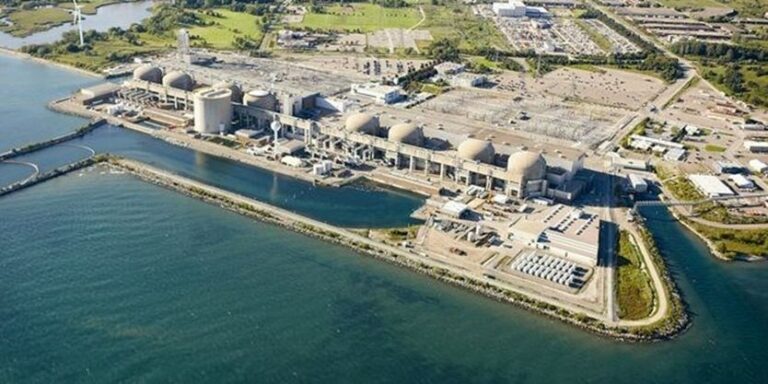Saturday, July 5, 2025
The Canada Green Building Council (CaGBC) released a ground-breaking new report, Full Disclosure: Industry Leadership on Transparency, on December 3, 2019. The report demonstrates the need for government action to drive data transparency and reduce emissions.
The report provides details on a new initiative designed to champion the importance of energy benchmarking and data transparency in the Canadian commercial real estate market. CaGBC and initiative participants — including QuadReal, Triovest Realty Advisors Inc., Concert Properties Ltd., Colliers International, and the Minto Group — are calling on federal and provincial governments to implement consistent building data disclosure regulations and requirements.
According to the United Nations, buildings account for nearly one third of global greenhouse gas (GHG) emissions. In the cities of Vancouver and Toronto, buildings contribute to approximately 50 per cent of each city’s current total emissions. So presumably for Canada to reach its emissions reduction targets and transition to a low-carbon economy over the next decade it is essential that existing buildings achieve significant energy efficiency improvements. The initiative champions argue that one of the barriers to meeting these goals is the current lack of publicly available data on commercial building performance in Canada.
Energy benchmarking and data transparency programs are already being successfully implemented by owners and operators in cities across the United States along with jurisdictions in Europe and Australia. Governments and owners use this data to set performance baselines, identify efficiency opportunities, reduce GHG emissions, and meet environmental targets.
“Canada clearly needs to catch up quickly when it comes to benchmarking, reporting, and disclosing data. Access to building performance data has enabled owners in other jurisdictions to make more informed choices about investing in retrofits,” said Thomas Mueller, CEO and president of CaGBC. “Canadian markets require data transparency to drive investment in efficiency programs and create demand for higher performing buildings.”
Thecritical need for publicly available data prompted CaGBC to launch the “Disclosure Challenge” in March 2019. Since then, its volunteer industry participants demonstrated their leadership by disclosing building information including energy use, GHG emissions, and water use data from over 700 buildings. Collectively, the five portfolio-owners and managers oversee upwards of $50 billion in real estate assets which is approximately 10 per cent of the estimated value of the large real estate holdings held by private and public entities in Canada.
While energy benchmarking regulations are already in effect in Ontario, the challenge marked the first time Canadian real estate owners have voluntarily disclosed their Canada-wide portfolio data. These five participants publicly disclosed available data for over 11 million square meters of space in buildings spread across the country from Victoria to Halifax including offices, warehouses, residential apartment buildings and retail shops. This information can be accessed via an online data visualization tool available on CaGBC.org
Highlights of the report include the following:
- Less than half (46 per cent) of the buildings disclosed as part of the challenge had complete data available, with significant gaps in the retail, warehouse, and industrial sectors. Incomplete data for specific building types illustrates the difficulty facing even motivated building owners and managers who want to assess the environmental footprints of their portfolios. Without government mandates to drive the disclosure of data across the country from buildings of all types, it is unlikely owners will be able to see the full picture required to achieve the best outcomes for their portfolios and to help Canada reach its emissions targets.
- In comparison with NRCan average site energy use intensity values, overall participant office buildings performed approximately 10 per cent better than the average office in Canada, whereas participant multi-residential buildings were about even with the average.
- Average energy use intensity for office and multi-residential buildings in the challenge were 286 kWh/m2 and 256 kWh/m2 respectively. When compared to high-performance efficiency standards for new office and multi-residential buildings in Canada coming into force in different jurisdictions (with a standard of 100 kWh/m2), Disclosure Challenge office buildings were approximately 65 per cent less efficient and multi-residential buildings were 61 per cent less efficient.
- GHG emissions intensity varied across the country and was generally correlated with the electricity supply grid intensity, so office buildings in Alberta were as high as 170 kgCO2e/m2 and apartments in British Columbia were as low as 24 kgCO2e/m2.
To read the full report, click visit the CaGBC’s website.
Featured image courtesy of Zia Syed @syedzia123.











